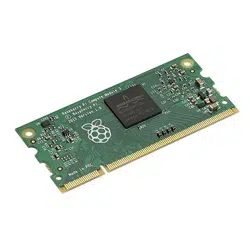Loading ...
Loading ...
Loading ...

©2019 NEC Display Solutions, Ltd. Page 33 of 74
7 Using the Yodeck bootloader to overwrite the
current OS
Yodeck Digital Signage has developed a special bootloader that can be used to replace the current OS
image with another image located on a connected USB storage device. This can be done without the
need to configure the display settings or connect a host PC, keyboard, or mouse.
This bootloader is included on newer releases of the NEC Edition Compute Module; it can also be
installed using the Compute Module Configuration Tool for Raspbian (see page 67). Look for the orange
Yodeck logo during boot to see if it is installed on the current OS image.
If the bootloader is installed on the system, it will search for connected USB storage devices and scan for
OS image files. If an OS image is found, the bootloader then writes the contents of that file to the
Compute Module’s eMMC – automatically overwriting the current OS image.
An OS image can be an .img file, or a ZIP file containing an .img file, stored in the root folder on a USB
storage device formatted in FAT, FAT32, NTFS, EXT2, EXT3 or EXT4. The file name must begin with
“RaspberryPi” or “AUTORaspberryPi” and end in “.zip” or “.img” for it to be recognized by the
bootloader.
A single image file located on the USB storage device with a name starting with “AUTORaspberryPi” will
automatically start overwriting the current system without any user intervention.
An image file name starting with “RaspberryPi” causes a selection to be shown on the boot screen, the
image can then be manually selected using a USB keyboard.
If there are no matching image files found by the bootloader, the normal boot process will continue in a
few seconds.
Important: The bootloader will replace the entire OS image on the Compute Module’s eMMC. All
existing data will be lost. Also, the bootloader does not persist after the OS image is replaced. To
use it again, it must be re-installed.
To use the bootloader, copy a suitably named valid OS image file to a USB storage device and insert it
into either the USB CM1 or CM2 connectors on the display. Restart the Compute Module from the OSD
or cycle power to the display.
Note: USB flash drives are preferred over USB hard drives. If a flash drive does not work, try another
brand/model.
Loading ...
Loading ...
Loading ...
